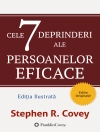After twenty-six-year-old Australian David Carpenter — a psychiatrist and neurological researcher himself — had a breakdown in his first year at Cambridge, his therapist told him, “Go into the Anglican Chaplaincy, investigate Christianity, and have a love-affair with a nice Christian girl.” He did precisely that.
Diana was only twenty. They grew so close that when, after four years, she married someone else, he returned home devastated. They did not meet again for eight years. He realised then that he still loved her, and she him. He asked her to break her marriage for him. Instead, she sent him away indefinitely.
In her last letter she begged him to give her up. She said that Oxford had rejected her dissertation. She was thirty-three, with her academic career now shattered. Vindication took 25 years.
This is the poignant true story of three hyper-intelligent, cosmopolitan, and highly-educated people fighting their way through to genuine faith, hope, and love in the modern world. It is about a real marriage and many assaults on it. Looking back, the author see herself as having been surrounded by love all her life.
She thinks of herself as a simple soul with a complicated mind.
Cuprins
Act I
Act II
Act III
Despre autor
SHE HAS BEEN PHOTOGRAPHING since the 1950s. In 1960, when she brought home her first colour slides in 35mm format, her father said that one would ‘never get anything worthwhile off those ridiculous little frames’, and that ‘It’s not really photography, of course, those pretty colours’. He had started her off with an 8X10 view camera and plates. No colour emulsion at that stage would resolve anything like what a good 35mm lens would put on it. Little did Daddy know how emulsions would nowadays reach equilibrium with lenses, or that modern scanning would enable us to make big prints even from faded, grainy 35mm Agfachromes 50 or more years old. He would have been astonished, but probably also delighted, by the development of digital imaging. The resolution in her oldest originals is not high, but the conception was often good, even ‘painterly’.
She used film until 2007.
WHAT SHE HAS PHOTOGRAPHED is nearly always what she would paint if she were a painter. She thinks of her scenic shots as a way to remind herself of what it felt like to stand in places where she will never stand again. They may perhaps enable others to feel that they can just walk through the frame into these same places.
http://priscillaturner.imagekind.com/store/












